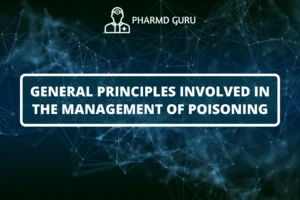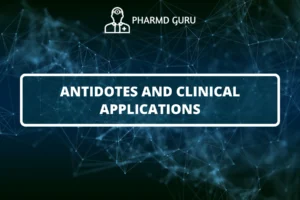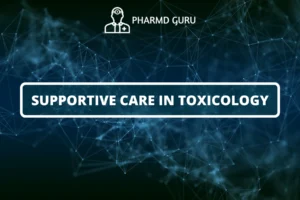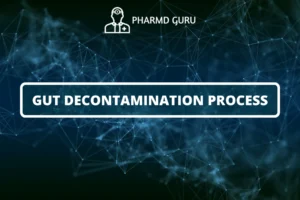Opiates overdose is a topic in clinical toxicology, which covers the following:
- Introduction
- Mechanism Of Toxicity
- Toxicokinetics
- Clinical (Toxic) Symptoms
- Investigations/Diagnosis
- Clinical Management Of Acute Overdose
SCROLL DOWN TO THE BOTTOM OF THE PAGE FOR ACTUAL NOTES
TABLE OF CONTENTS:
- Introduction
- Understanding Opiates
- 2.1. Opiates vs. Opioids
- 2.2. Commonly Abused Opiates
- Opiates Overdose: Causes and Risk Factors
- Symptoms of Opiates Overdose
- Management of Opiates Overdose
- 5.1. Immediate Response
- 5.2. Medical Intervention
- 5.3. Long-term Treatment and Support
- Prevention of Opiates Overdose
Introduction
Opiates are a class of drugs derived from the opium poppy or synthetic substances that act on the brain’s opioid receptors. While these medications can provide effective pain relief when used as prescribed, their misuse and abuse can lead to serious health consequences, including overdose. This article explores the causes, symptoms, and management of opiates overdose.
2. Understanding Opiates
2.1. Opiates vs. Opioids
The terms “opiates” and “opioids” are often used interchangeably, but there is a slight distinction between the two. Opiates refer to naturally occurring drugs derived from the opium poppy, such as morphine and codeine. On the other hand, opioids encompass both natural opiates and synthetic or semi-synthetic substances that have similar effects on the opioid receptors, such as oxycodone, hydrocodone, and fentanyl.
2.2. Commonly Abused Opiates
Several opiates are commonly abused, either illicitly or through the misuse of prescription medications. Some of the most frequently abused opiates include:
- Heroin
- Morphine
- Codeine
- Oxycodone (OxyContin)
- Hydrocodone (Vicodin)
- Fentanyl
3. Opiates Overdose: Causes and Risk Factors
Opiates overdose occurs when an individual takes a dose of opiates that overwhelms the body’s ability to metabolize and excrete the drug. Several factors can contribute to an increased risk of overdose, including:
- High Dose: Taking a higher than prescribed or recommended dose of opiates.
- Polydrug Use: Combining opiates with other substances, such as alcohol or benzodiazepines, which can potentiate the depressant effects.
- Decreased Tolerance: A period of reduced opiate use leading to decreased tolerance, making the individual more susceptible to overdose if they resume using the drug at their previous dosage.
- Mixing Routes of Administration: Using different methods of administration (e.g., injecting, snorting, smoking) that can result in higher drug concentrations and faster onset of effects.
- Lack of Awareness: Insufficient knowledge about the potency and potential risks of the opiate being consumed.
- Previous Overdose: Individuals who have experienced an overdose in the past are at a higher risk of subsequent overdose.
4. Symptoms of Opiates Overdose
Recognizing the symptoms of opiates overdose is crucial for timely intervention. Common signs and symptoms include:
- Extreme Drowsiness: Individuals may exhibit excessive sleepiness or loss of consciousness.
- Slow or Shallow Breathing: Breathing may become slow, shallow, or irregular, potentially leading to respiratory failure.
- Pinpoint Pupils: The pupils of the eyes constrict significantly, appearing as pinpoint-sized.
- Cold and Clammy Skin: The skin may feel cold, moist, and clammy to the touch.
- Blue Lips or Fingernails: Cyanosis, indicated by bluish discoloration of the lips, fingertips, or nails, may occur due to inadequate oxygenation.
It’s important to note that an overdose can quickly escalate into a life-threatening emergency, requiring immediate medical attention.
5. Management of Opiates Overdose
5.1. Immediate Response
If you suspect someone is experiencing an opiates overdose, take the following steps:
- Call Emergency Services: Dial emergency services immediately to seek professional help.
- Administer Naloxone: If available, administer naloxone, an opioid antagonist that can reverse the effects of opiates and restore normal breathing. Naloxone is available as a nasal spray or injection and can be easily administered by following the instructions provided.
- Perform Rescue Breathing: If the person is not breathing or breathing inadequately, begin rescue breathing (mouth-to-mouth resuscitation) to maintain oxygen flow until medical professionals arrive.
5.2. Medical Intervention
Upon arrival, medical professionals will provide additional treatment and support, which may include:
- Monitoring Vital Signs: Continuously assessing the person’s heart rate, blood pressure, oxygen levels, and breathing.
- Additional Doses of Naloxone: Administering additional doses of naloxone if necessary to counteract the opiate’s effects.
- Respiratory Support: Providing oxygen therapy or assisted ventilation if the person’s breathing remains compromised.
- Hospitalization: Depending on the severity of the overdose and the individual’s condition, hospitalization for further monitoring and treatment may be required.
5.3. Long-term Treatment and Support
Following an opiate overdose, it is crucial to address the underlying issues related to opiate misuse or addiction. This may involve:
- Addiction Treatment Programs: Enrolling in substance abuse treatment programs that may include counseling, behavioral therapies, and support groups.
- Medication-Assisted Treatment: Considering medications such as methadone, buprenorphine, or naltrexone, which can help manage cravings, reduce withdrawal symptoms, and support recovery.
- Psychotherapy: Engaging in individual or group therapy sessions to address the psychological aspects of addiction and develop coping strategies.
- Supportive Care: Receiving ongoing support from healthcare professionals, family, and friends to maintain sobriety and prevent relapse.
6. Prevention of Opiates Overdose
Preventing opiate overdose involves various strategies:
- Education and Awareness: Promoting education about the risks of opiate misuse, proper medication storage, and the signs of overdose.
- Prescription Guidelines: Ensuring healthcare providers adhere to appropriate prescribing practices, including careful assessment of pain levels, consideration of alternative treatments, and monitoring of patients on long-term opioid therapy.
- Naloxone Availability: Increasing access to naloxone for individuals at risk of overdose and their loved ones.
- Safe Disposal: Encouraging proper disposal of unused or expired medications to prevent misuse.
ACTUAL NOTES




